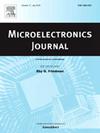一种基于动态反馈路径的伽罗瓦LFSR的轻量级真随机数发生器设计
IF 1.9
3区 工程技术
Q3 ENGINEERING, ELECTRICAL & ELECTRONIC
引用次数: 0
摘要
线性反馈移位寄存器(LFSR)是电子系统中应用广泛的一种电路结构,常被用作伪随机数发生器(PRNG)来产生伪随机序列。然而,鉴于与隐私保护和数据加密相关的重大挑战,传统的prng经常无法满足电子系统日益增长的安全需求。相比之下,真随机数生成器(True Random Number Generators, trng)已经成为硬件安全领域中必不可少的安全原语,引起了越来越多的关注。针对这些挑战,本文提出了一种基于Galois LFSR的新型轻量级TRNG架构。这种创新设计结合了逆变器和二对一多路复用器来修改反馈路径。该结构已在AMD Xilinx Artix-7和Kintex-7 FPGA板上实现。值得注意的是,它展示了一种资源高效的设计,仅使用17个查找表(lut)和9个D触发器(dff),同时实现吞吐量为300Mbps的随机数。此外,该结构成功地通过了随机性检验和鲁棒性检验,表明其在安全电子系统中具有广阔的应用潜力。本文章由计算机程序翻译,如有差异,请以英文原文为准。
A design of lightweight true random number generator based on Galois LFSR with dynamic feedback path
The Linear Feedback Shift Register (LFSR) is a widely utilized circuit structure in electronic systems, often employed as a Pseudo Random Number Generator (PRNG) for generating pseudo random sequence. However, in light of the significant challenges associated with privacy protection and data encryption, traditional PRNGs have frequently failed to meet the increasing security demands of electronic systems. In contrast, True Random Number Generators (TRNGs), have emerged as essential security primitives within the realm of hardware security, garnering increasing attention. In response to these challenges, this paper proposes a novel lightweight TRNG architecture based on Galois LFSR. This innovation design incorporates inverters and two-to-one multiplexers to modify the feedback path. The proposed structure has been implemented on AMD Xilinx Artix-7 and Kintex-7 FPGA boards. Notably, it demonstrates a resource-efficient design, utilizing only 17 Look-Up Tables (LUTs) and 9 D Flip-Flops (DFFs), while achieving random number with throughput of 300Mbps. Furthermore, the structure successfully passes both randomness test and robustness test, indicating its promising application potential in secure electronic systems.
求助全文
通过发布文献求助,成功后即可免费获取论文全文。
去求助
来源期刊

Microelectronics Journal
工程技术-工程:电子与电气
CiteScore
4.00
自引率
27.30%
发文量
222
审稿时长
43 days
期刊介绍:
Published since 1969, the Microelectronics Journal is an international forum for the dissemination of research and applications of microelectronic systems, circuits, and emerging technologies. Papers published in the Microelectronics Journal have undergone peer review to ensure originality, relevance, and timeliness. The journal thus provides a worldwide, regular, and comprehensive update on microelectronic circuits and systems.
The Microelectronics Journal invites papers describing significant research and applications in all of the areas listed below. Comprehensive review/survey papers covering recent developments will also be considered. The Microelectronics Journal covers circuits and systems. This topic includes but is not limited to: Analog, digital, mixed, and RF circuits and related design methodologies; Logic, architectural, and system level synthesis; Testing, design for testability, built-in self-test; Area, power, and thermal analysis and design; Mixed-domain simulation and design; Embedded systems; Non-von Neumann computing and related technologies and circuits; Design and test of high complexity systems integration; SoC, NoC, SIP, and NIP design and test; 3-D integration design and analysis; Emerging device technologies and circuits, such as FinFETs, SETs, spintronics, SFQ, MTJ, etc.
Application aspects such as signal and image processing including circuits for cryptography, sensors, and actuators including sensor networks, reliability and quality issues, and economic models are also welcome.
 求助内容:
求助内容: 应助结果提醒方式:
应助结果提醒方式:


